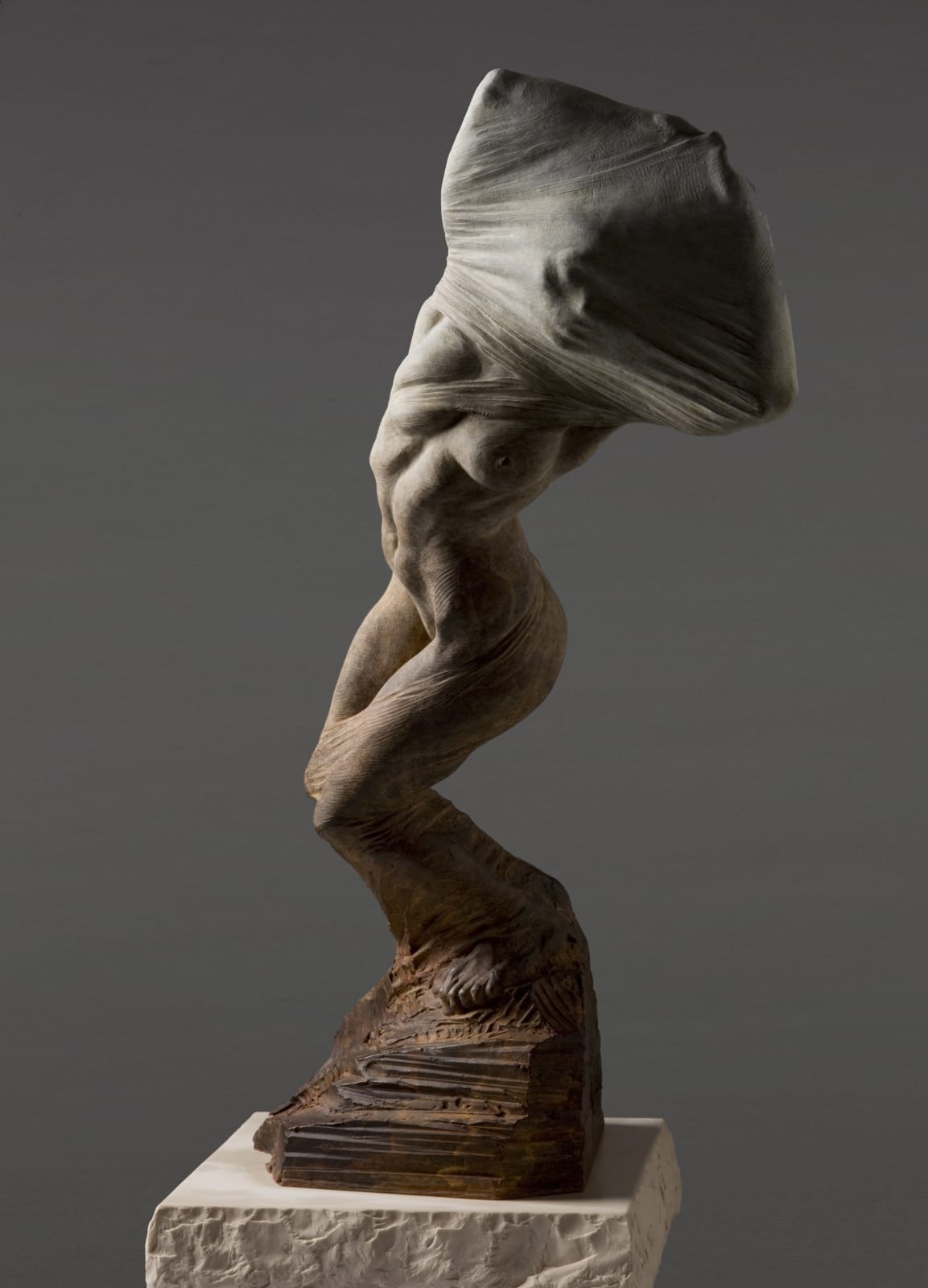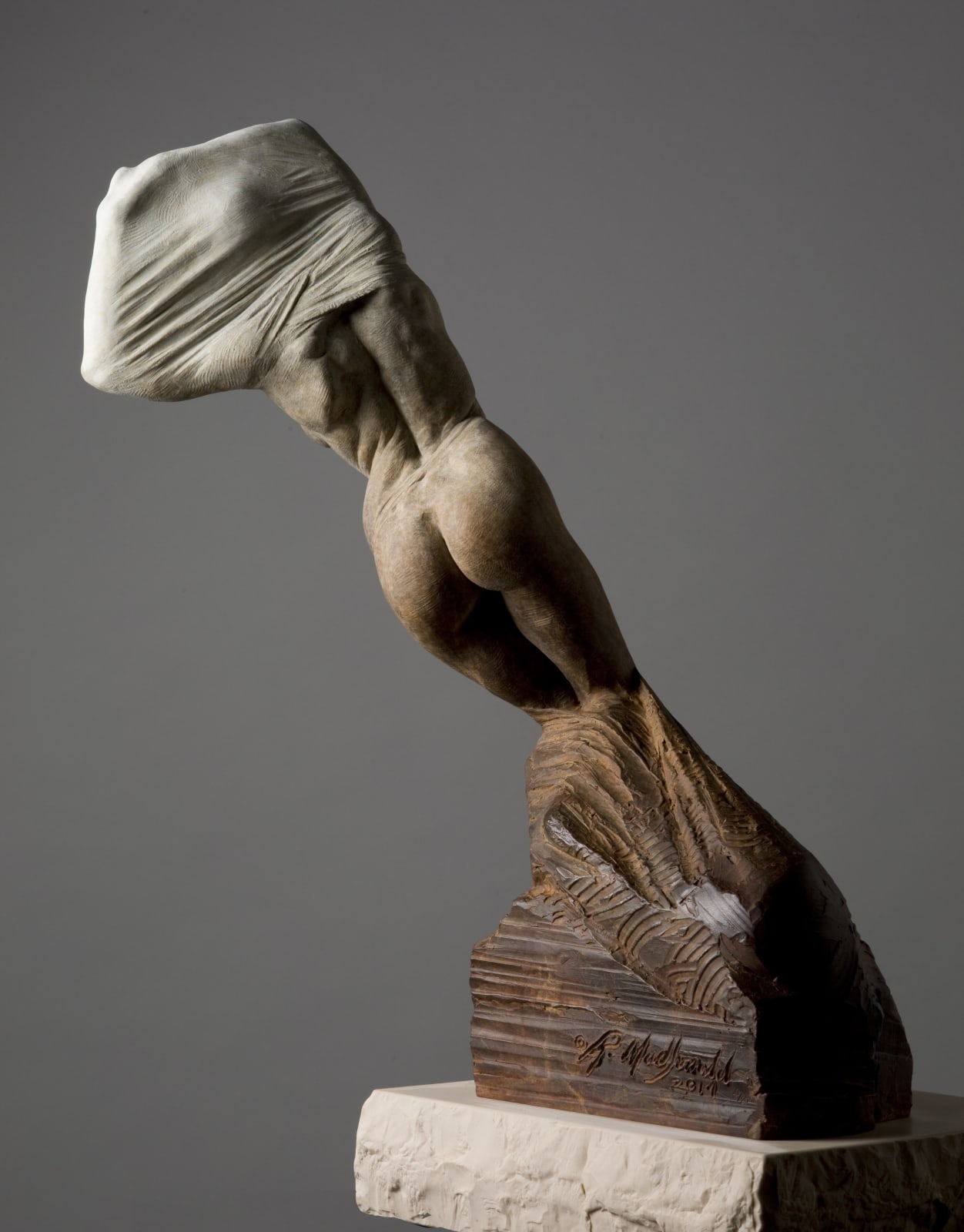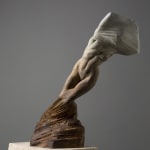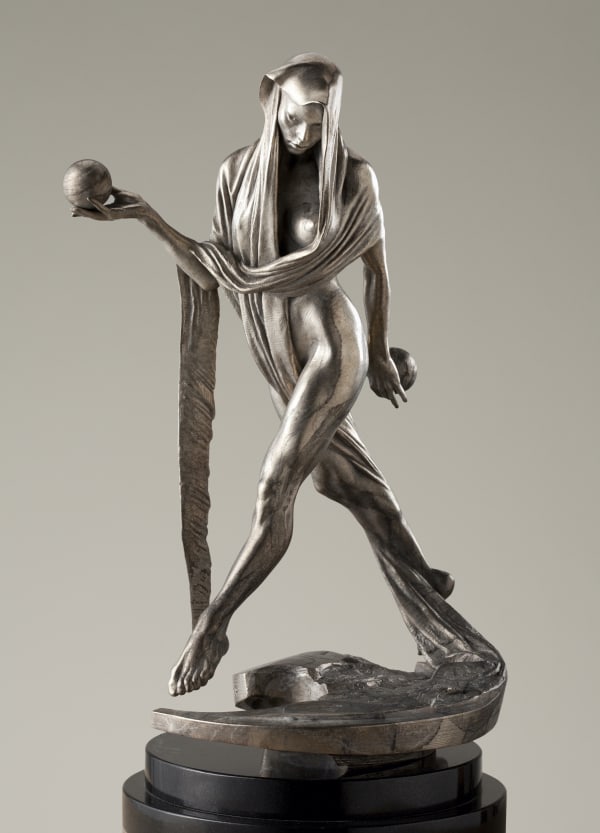Richard MacDonald American, b. 1946
Further images
In Unveiling Nature, the curving torso of the woman is wrapped in a sinuous drapery that veils her face – despite the veiling of her face, and the way the drapery seems to be restricting her movement, the dominant impression is one of freedom – this woman is breaking free. Her face is mysteriously obscured, yet her features are still visible through the seemingly transparent drapery and her body is boldly and assertively free from the twisting cloth.
Her strength is her beauty, and her beauty defies all bondage. In the ancient tradition of female goddess figures this woman is more than an individual – she transcends the specific, to become a symbol and representative of feminine beauty and strength. The bonds of society are being pulled away, and any attempt to wrap her in societal restriction is being overcome. She needs no intervening hero: in this instance we see an elemental example of feminine strength finding her own liberation.
The figure of the woman is sculpted with bold strokes. We sense that the piece was created in the clay with a sure and deliberate conviction – not the result of a tentative touch, or an unclear idea – the character of the woman is assertively felt in the voluptuousness of her form. She hails from our distant cultural past, but is undeniably modern in the way she has been imagined by Richard MacDonald.








